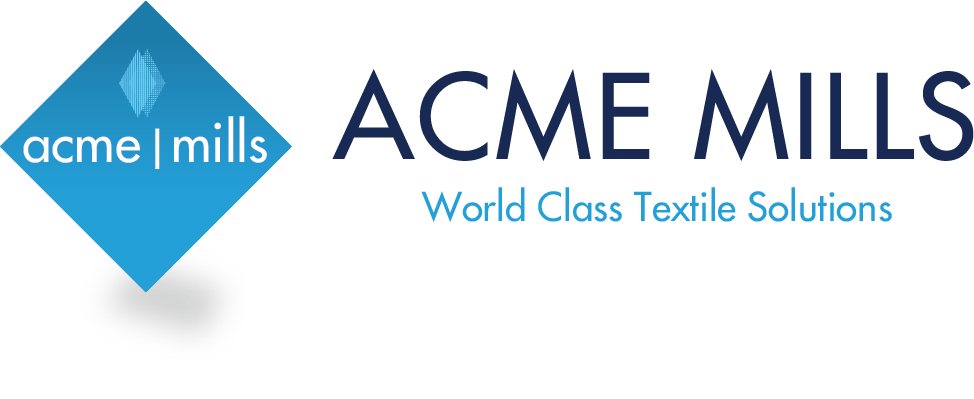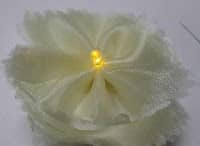Technical textiles are reported to be the fastest growing sector of the textile industrial sector. A technical textile is a textile that has been developed to meet the exacting specified high-performance requirements of a particular end-use other than conventional clothing and furnishings. In many cases, specially developed technical yarns are employed to support and reinforce the fabric properties.It is considered that technical textiles account for approximately 21 per cent of all textiles. The main markets are: traditional industrial fabrics, for example,
- Canvas, tents, etc. (43%);
- Transportation and automotive (23%);
- Leisure (12%);
- Geotextiles (10%);
- Medical textiles (10%); and
- Protective apparel (2%).
Classification and Applications of Technical Textiles:
Agriculture, Horticulture and Fishing:
Textiles have always been used extensively in the course of food production, most notably by the fishing industry in the form of nets, ropes and lines but also by agriculture and horticulture for a variety of covering, protection and containment applications. Although future volume growth rates appear to be relatively modest, this is partly due to the replacement of heavier weight traditional textiles, including jute and sisal sacking and twine, by lighter, longer lasting synthetic substitutes, especially polypropylene. Lightweight spun bonded fleeces are now used for shading, thermal insulation and weed suppression. Heavier nonwoven, knitted and woven constructions are employed for wind and hail protection. Fibrillated and extruded nets are replacing traditional baler twine for wrapping modern circular bales. Capillary nonwoven matting is used in horticulture to distribute moisture to growing plants. The bulk storage and transport of fertilizer and agricultural products is increasingly undertaken using woven polypropylene FIBCs (flexible intermediate bulk containers – big bags) in place of jute, paper or plastic sacks. At sea, fish farming is a growing industry which uses specialized netting and other textile products. High performance fibres such as HMPE (e.g. Dyneema and Spectra) are finding their way into the fishing industry for the manufacture of lightweight, ultra-strong lines and nets.
Construction-Building and Roofing:
Textiles are employed in many ways in the construction of buildings, both permanent and temporary, dams, bridges, tunnels and roads. A closely related but distinct area of use is in geotextiles by the civil engineering sector. Temporary structures such as tents, marquees and awnings are some of the most obvious and visible applications of textiles where these used to be exclusively made from proofed heavy cotton, a variety of lighter, stronger, rot-, sunlight- and weatherproof (also often fireproof) synthetic materials are now increasingly required. Nonwoven glass and polyester fabrics are already widely used in roofing applications while other textiles are used as breathable membranes to prevent moisture penetration of walls. Fibres and textiles also have a major role to play in building and equipment insulation. Glass fibres are almost universally used in place of asbestos now. Double wall spacer fabrics can be filled with suitable materials to provide sound and thermal insulation or serve as lightweight cores for composite materials.Composites generally have a bright future in building and construction. Existing applications of glass-reinforced materials include wall panels, septic tanks and sanitary fittings. Glass, polypropylene and acrylic fibres and textiles are all used to prevent cracking of concrete, plaster and other building materials. More innovative use is now being made of glass in bridge construction.
Home Textiles:
By far the largest area of use for other textiles as defined above, that is other than fabrics, nonwovens and composite reinforcements, over 35% of the total weight of fibres and textiles in that category, lies in the field of household textiles and furnishing and especially in the use of loose fibres in wadding and fiberfill applications. Hollow fibres with excellent insulating properties are widely used in bedding and sleeping bags. Other types of fibre are increasingly being used to replace foams in furniture because of concern over the fire and health hazards posed by such materials.
Woven fabrics are still used to a significant extent as carpet and furniture backings and in some smaller, more specialized areas such as curtain header tapes. However, nonwovens such as spun bonded have made significant inroads into these larger markets while various dry laid and hydro-entangled products are now widely used in household cleaning applications in place of traditional mops and dusters.
The largest use of textiles is for hygiene applications such as wipes, babies’ diapers (nappies) and adult sanitary and incontinence products. Nonwovens dominate these applications which account for over 23% of all nonwoven use, the largest proportion of any of the 12 major markets for technical textiles. The other side of the medical and hygiene market is a rather smaller but higher value market for medical and surgical products such as operating gowns and drapes, sterilization packs, dressings, sutures and orthopaedic pads. At the highest value end of this segment are relatively tiny volumes of extremely sophisticated textiles for uses such as artificial ligaments, veins and arteries, skin replacement, hollow fibres for dialysis machines and so on.
The economic and environmental advantages of using textiles to reinforce, stabilise, separate, drain and filter are already well proven. Geotextiles allow the building of railway and road cuttings and embankments with steeper sides, reducing the land required and disturbance to the local environment. Revegetation of these embankments or of the banks of rivers and waterways can also be promoted using appropriate materials.
Transport applications (cars, Lorries, buses, trains, ships and aerospace) represent the largest single end-use area for technical textiles, accounting for some 20% of the total. Products range from carpeting and seating (regarded as technical rather than furnishing textiles because of the very stringent performance characteristics which they must fulfil), through tyre, belt and hose reinforcement, safety belts and airbags, to composite reinforcements for automotive bodies, civil and military aircraft bodies, wings and engine components, and many other uses.
Important uses of textiles include the manufacturing of bags and sacks, traditionally. An even faster growing segment of the packaging market uses lighter weight nonwovens and knitted structures for a variety of wrapping and protection applications, especially in the food industry. Tea and coffee bags use wet-laid nonwovens. Meats, vegetables and fruits are now frequently packed with a nonwovens insert to absorb liquids. Other fruits and vegetable products are supplied in knitted net packaging from cotton, flax and jute but increasingly from polypropylene. Strong, lightweight spun bonded and equivalent nonwoven paper-like materials are particularly useful for courier envelopes while adhesive tapes, often reinforced with fibres, yarns and fabrics, are increasingly used in place of traditional twine. Woven strapping are less dangerous to cut than the metal bands and wires traditionally used with densely packed bales.
Textiles for protective clothing and other related applications are another important growth area which has attracted attention and interest somewhat out of proportion to the size and value of the existing market. The variety of protective functions that needs to be provided by different textile products is considerable and diverse. It includes protection against cuts, abrasion, ballistic and other types of severe impact including stab wounds and explosions, fire and extreme heat, hazardous dust and particles, nuclear, biological and chemical hazards, high voltages and static electricity, foul weather, extreme cold and poor visibility.
Applications of sports textile are diverse and range from artificial turf used in sports surfaces through to advanced carbon fibre composites for racquet frames, fishing rods, golf clubs and cycle frames. Other highly visible uses are balloon fabrics, parachute and paraglider fabrics and sailcloth.
The final category of technical textile markets, as defined by Techtextile, is technical textiles for protection of the environment and ecology. This is not a well defined segment yet, although it overlaps with several other areas, including industrial textiles (filtration media), geotextiles (erosion protection and sealing of toxic waste) and agricultural textiles (e.g. minimizing water loss from the land and reducing the need for use of herbicides by providing mulch to plants).










